“Cars look after themselves; vans are the conundrum.”
So says Anglian Water Services head of fleet Mick Farmer who is nearing the halfway stage on his mission to transition the entire car fleet to full electric (480 out of 1,000, of which 300 have been in the past two years alone).
In contrast, fewer than 100 of the 2,200 light commercial vehicles are zero emission.
“We have a target of net zero by 2030 as UK Water and so we're all aiming in that direction,” Farmer told Fleet News during a Teams conversation from his Yorkshire home.
“We have quite an aggressive plan for LCVs and cars. Cars look after themselves; the natural choice is electric, which is BIK-led. Theoretically, finance available, all of the cars will be electric by the end of 2030, but probably 2028.”
However, he added: “Vans are the conundrum. We are in the same pickle as others – range, staff on standby for call outs, vans taken home.”
While the “natural choice” for company cars is electric, Anglian Water is still adjusting its choice list to ensure the options available are cost-effective, portray the right company image and have sufficient range to meet all driver and business needs. In short, they need to be fit for purpose for everyone.
“Cars look after themselves; vans are the conundrum.”
So says Anglian Water Services head of fleet Mick Farmer who is nearing the halfway stage on his mission to transition the entire car fleet to full electric (480 out of 1,000, of which 300 have been in the past two years alone).
In contrast, fewer than 100 of the 2,200 light commercial vehicles are zero emission.
“We have a target of net zero by 2030 as UK Water and so we're all aiming in that direction,” Farmer told Fleet News during a Teams conversation from his Yorkshire home.
“We have quite an aggressive plan for LCVs and cars. Cars look after themselves; the natural choice is electric, which is BIK-led. Theoretically, finance available, all of the cars will be electric by the end of 2030, but probably 2028.”
However, he added: “Vans are the conundrum. We are in the same pickle as others – range, staff on standby for call outs, vans taken home.”
While the “natural choice” for company cars is electric, Anglian Water is still adjusting its choice list to ensure the options available are cost-effective, portray the right company image and have sufficient range to meet all driver and business needs. In short, they need to be fit for purpose for everyone.
Consequently, the range of models will narrow, with a focus on dual motor vehicles which offer longer range of typically 300-plus miles.
“If 300 miles in a day isn't enough, you are probably not being as productive as you should be in your job!” Farmer quipped.
“We're going through a process of reviewing our car policy,” he added. “Currently you can have anything that sits on the portal in EV, diesel or hybrid - nobody goes for the diesel option and it’s coming out in the next iteration of the policy. We also allow people to top up but we’re taking that away as well.
“We will restrict choice based on sensible types of car.”
Cars leased, vans bought
While the cars are leased, typically on four-year contracts for ICE and five for BEV, the van fleet is bought outright. With electric, that may need to change due to the volatility of the used market; few fleets want the burden of defleeting and re-selling their own electric models.
Farmer may also consider the operating cycle if he needs to accelerate the transition to meet the 2030 target. Anglian Water currently keeps its vans for up to eight years, although they are written off over six.
“Given the miles that we cover, it would be foolish to replace vans at five years because we're doing 10,000 miles a year,” he said. “But we've just defleeted some that have between 60,000 and 70,000 miles on, so they've gone a little bit earlier than the time frame. We can be dynamic in how we make those changes.”
Decisions have traditionally been based on maintenance spend, mileage and general condition; electrification adds a new dimension.
With 95% of its vans going to the employee’s home overnight, Anglian Water recently surveyed its drivers to establish who could theoretically charge at home.
It asked three questions:
- Do you own your property?
- Do you have off street parking
- Can we fit a charging unit to your property?
The survey found that 700-800 drivers could have a charger fitted to their home, leaving up to 1,500 who couldn’t.
So far, Anglian Water has installed just over 20 home charging units for cars (funded by the employee) and vans (paid for by the company).
“The next two years are going to be the most challenging in terms of what do we do, how do we do it, what's the operational changes that we might need to look to make,” Farmer said.
“For example, how do we reduce the weight that we currently carry in the ICE vehicles to allow us to maximise the range of the electric and stay under the maximum gross weight vehicle weights?”
He points to concerns over range, the 4.25-tonne tacho issues and the 24/7 on-call teams.
“One size will not fit all when it comes to vehicles, charging locations, daily work, rest and breaks,” Farmer said.
“There's software providers out there, such as Guided Energy, which can take our daily work, our daily route, look at our telematics data in terms of range left in the battery, and schedule within that day a rapid charge at some point.
“But it now starts to make our workforce inefficient because at points in the day we have to stop and plug in for 20 minutes, half an hour - if we can find a rapid that nobody else is on that works. So we've got lots of different things that that are causing problems.”
Evaluating electric vans
Two Anglian Water departments are responsible for the bulk of the van fleet: clean water and water recycling. Both are customer facing and, therefore, on standby. They also tow plant assets up to two tonnes.
To properly evaluate the potential of the Vauxhall Vivaro-e under these operating conditions, Anglian Water bought 10 to fit with its standard kit and monitor performance over several months - in rain, fully loaded, in the dark, using heaters and aircon - to build an accurate picture on real-world range. It also trained the drivers so they could maximise efficiency.
Interestingly, in contrast to other reported tests, towing wasn’t the biggest drain on the battery, possibly because Anglian Water was towing lower weights, around one tonne, during the trial.
“Range depends on the time of year. We found towing wasn't too much of a problem and how it was driven ate into the range probably 20-25% but not significantly more,” Farmer said. “The winter periods had a much bigger impact.”
Despite the challenges, Farmer still has targets to meet.
“We have them built into the replacement plan, but we need to be very careful and work with each individual unit to make sure that the vehicle we provide and the infrastructure that we're offering works for them,” he said.
The obvious starting point are the small-to-mid sized vans run by the teams that are not on standby.
“We know that the 3.5-tonne product is going to have to wait as long as we possibly can, but the two-tonne product and the small van shouldn't wait.”
An additional challenge is the investment in workplace changing infrastructure. Anglian Water self-generates a lot of the power requirements at its sewage and water treatment works with residual capacity only sufficient to allow 7kWh and 11kWh chargers.
Solar is a possible solution – it has panels at many sites – and Farmer is talking to the energy team about surplus capacity.
Despite the complexities of electrifying the larger assets, trials continue apace. Within six months, Farmer will be operating his first electric trucks, with four 26-tonne tippers joining the fleet.
He has considered other options, including HVO and hydrogen, but believes electric is likely to offer the best solution.
“One of our problems is that we don't bunker fuel. So HVO is a bit of an issue for our vehicle fleet,” he explains, adding further concerns about supply, reliability and price.
Farmer has similar fears about hydrogen, particularly pricing: “A full electric truck is probably three to four times more expensive than its diesel equivalent. The hydrogen truck will be eight times more expensive.”
It’s a similar story for vans; for the price of Vauxhall’s Vivaro Hydrogen van “I can have five diesel Vivaros near enough or three electric ones”.
Maximising fleet efficiencies
Utilisation has been a key theme of Farmer’s five-year tenure at Anglian Water. From telematics to remote tacho downloads (the latter saved around 5,000 operational hours per year), he has sought to maximise efficiencies.
“One thing we've done is move the fleet team from a world of providing a vehicle to a world of fleet management. So we now manage the fleet from the fleet team,” he said.
“By us taking the responsibility of the fleet management, the engineer and the engineer’s manager can concentrate on what they're doing rather than trying to manage their vehicles as well. That's been pretty productive.”
Farmer cites, as an example, service bookings which historically were handled by individual drivers. Now the fleet team liaises with the planning teams and proactively books vehicles in at convenience times, such as rest or off days.
While the telematics data - managed alongside accident data and driver licence information via its insurer partner’s Axa Hub - points to Anglian Water having a low-risk fleet, Farmer is launching a set of interventions via e-learning.
This will complement the onboard learning that comes from the in-cab lightbar which alerts the driver when they are speeding via alarms and flashing lights.
The e-learning software will be integrated with Anglian Water’s in-house system which contains a range of training modules. Courses will include speed awareness, driver perception and an annual e-learning check in.
“I think the term is mini e-learning and what we mean by that is if you pass that's it - you don't need to do the training,” Farmer said. “If you fail, then you've got to do the training.”
His fleet team of 12 manages every aspect of the fleet, including hires, taxation, service bookings, electric charger faults, speeding/parking fines and the telematics data, as well as overseeing the 11 vehicle workshops.
With the vans bought outright, the team is also responsible for de-fleeting and remarketing, using Peterborough-based City Auction Group.
“I'm an advocate of keeping as much in our region as possible,” Farmer added.
City Auction Group also acts as a holding compound for Anglian Water’s new vehicles, which it now delivers to drivers rather than them taking time out of their day to collect.
Delivery is confirmed via a vehicle handover form in Anglian Water’s fleet app. City Auction Group also uploads images of the vehicle to be de-fleeted into the app giving Farmer full sight of his fleet.
Sal/sac and used car solutions
Just over a year-and-a-half ago, Anglian Water introduced a salary sacrifice scheme as a benefits package for its non-company car employees.
However, it has been slow to gain acceptance, with around 100 cars currently on the scheme. Limited to full electric cars, uptake has been restricted to higher salary bands.
Unperturbed, Farmer is now looking at alternative solutions to broaden the scheme’s appeal with 20% taxpayers. One of those solutions is used cars.
Anglian Water has already introduced a used car option for company car drivers via its leasing provider Lex Autolease, which introduced a used vehicle portal in the summer.
It has already taken almost 20 cars, targeting drivers of older diesel and hybrid models.
“Why? Two reasons: the car is there and delivered within six or seven days of placing the order, and financially I can nearly do two cars for the price of one,” Farmer said.
“I can take them from a 12-month period to 36 months and I can choose the mileage range.”
He is now talking to two salary sacrifice providers about mirroring the same used car solution.
“You get a similar quality vehicle as you would have got through the new scheme, but it is significantly cheaper,” he said.
“Fleet has always been about looking for different opportunities.”
FACTFILE
-
Cars – just under 1,000 of which 480 are full electric
-
Vans – 2,200, just under 100 are electric
-
Trucks - 150 (7.5t to 44t)
-
Plant – 500-600 plant and specialist machinery
-
Funding: cars – contract hire; vans – outright purchase
-
Operating cycles: cars - four years (ICE), five years (BEV); vans – eight years
Login to continue reading.
This article is premium content. To view, please register for free or sign in to read it.








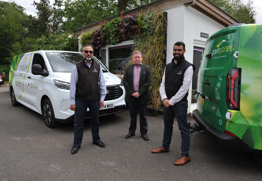

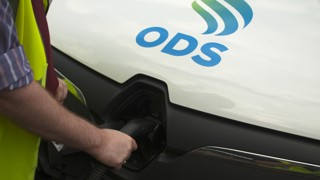
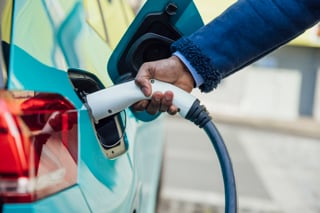

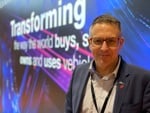



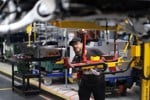







Login to comment
Comments
No comments have been made yet.